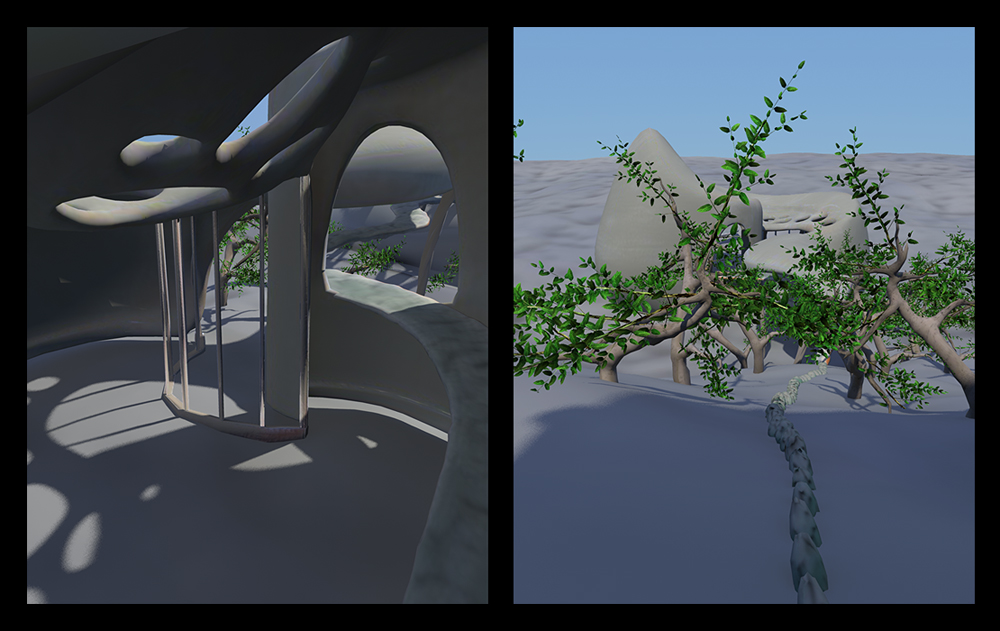





Noh-timeGarden, 2007
Double-channel Animation
Noh-timeGarden is the third in a series of installations, in which two screens, side by side show an animated garden from the point of view of two opposing cameras that move towards one another. The garden is subjected to mathematical and metaphoric pulsating cycles. In this series, the natural world is portrayed as metamorphosizing into a technological hybrid.
Timegardens are contemplative artworks in the tradition of the ‘sublime’ landscape gardens first designed in the 18th-century, meant to be the subject of meditation on the transitory nature of human life as compared to slower natural cycles.
The Noh-timeGarden was inspired by Japanese landscape painting, employing the vertical format of a scroll. A virtual camera pulses in and out, moving along a circuitous path through an abstract, contemporary architecture designed by the Hart, but inspired by Contemporary Asian architecture: Hayao Miyazaki's subject in his 2003 film Howl's Moving Castle meets Zaha Hadid's project for a Chinese opera house. One passes through it, then up a wooded hill to a Japanese temple, and back again.
At the same time, the forest goes through a yearly cycle of growth: leaves sprouting, dying, and then sprouting again. The music is also cyclical, based on a performance of the Rolling Stones 1964 piece “I am Waiting,” by Hart.
Hart performed using a software instrument designed by sound designer Hans-Christoph Steiner that processes sound and feedback in real-time. The software extracts data from Hart's voice and the animation curves from the 3D environment and then uses this data to generate the composition from Hart's singing.
This piece was designed to express duality. Both image and sound show opposition, but at the same time create streams that mix in both the eye and ear in a way that is complimentary.
Custom software and sound design: Hans-Christoph Steiner